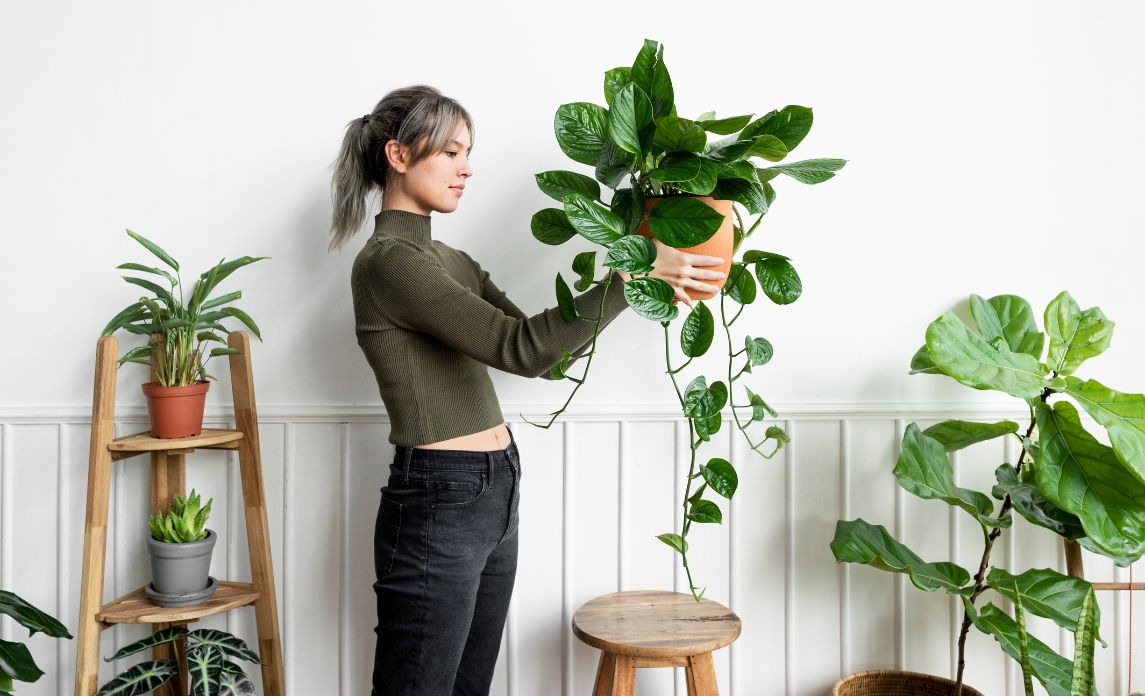Indoor plants not only add a touch of greenery and beauty to our living spaces, but also offer a myriad of benefits for our health and well-being. From improving air quality to reducing stress levels, these leafy companions have earned their place as essential elements of interior decor.
However, to ensure that indoor plants thrive and flourish, it's crucial to maintain a clean indoor environment. While there are various types of flora that can survive in less-than-ideal conditions, they won't last very long and they won't be very healthy either.
Indeed, a dirty environment can cause the following issues that can affect plant health:
- Poor Air Quality. Dust, pollutants, and airborne particles can accumulate in a dirty indoor environment, leading to reduced air quality. These contaminants can settle on plant leaves, obstructing their ability to photosynthesise properly.
Inadequate air circulation can also contribute to stagnant air, creating an unfavourable environment for plant growth.
- Reduced Light Penetration. Dirty windows, light fixtures, and surfaces can obstruct natural light from reaching indoor plants. Plants need light for photosynthesis to make food, so a lack of adequate light can result in slow growth, pale leaves, and overall poor plant health.
- Increased Risk of Pest Infestations. An unclean, unhygienic environment creates perfect hiding places and breeding grounds for pests such as spider mites, aphids, and fungus gnats. These pests not only damage plant foliage but can also spread diseases, weakening the overall health of indoor plants.
- Potential Spread of Diseases. There is a wide variety of fungal diseases and bacterial infections in plants that thrive in moist, dirty conditions. Moreover, soil debris and organic matter can harbour pathogens that infect plant roots and foliage, leading to stunted growth, yellowing leaves, and even plant death.
Simply put, if you want to keep your beloved botanical friends in tip-top shape, you need to ensure the cleanliness of your home and office. So, in this article, we'll explore cleaning tips that a professional cleaning company like Crewcare follows to keep your indoor greenery bursting with life.
Whether you're a seasoned plant parent or just starting your indoor garden journey, these cleaning advice will help you create an optimal setting for your beloved botanical friends.
Cleaning Tips for Indoor Spaces to Promote Indoor Plant Health
There are many seemingly simple cleaning tasks that actually play a bigger role in keeping indoor plants healthy. Here are a few key tips:
Dust Regularly
When dust accumulates on surfaces, it can block sunlight and hinder plant photosynthesis. So, regularly dust shelves, windowsills, and other surfaces near your plants using a soft cloth or duster. Pay special attention to plant leaves, as dust buildup can clog leaf pores and impede respiration. Use a soft damp cloth to gently wipe the leaves and remove dust to keep them clean.
Sweep and Vacuum Floors
Apart from making your floors and carpets look dull, dirt and debris can also attract pests and contribute to poor air quality. Keep floors and carpets clean by sweeping and vacuuming regularly to remove dust, food crumbs, and other debris that could harbour pests or introduce disease-causing germs to your indoor environment. Make sure to also clean areas around potted plants where soil may accumulate.
Clean Windows and Light Fixtures
With clean, clear windows, more natural light can enter indoor spaces, which bolsters the growth and vitality of indoor plants. Make it a habit to clean windows and light fixtures to remove dirt, grime, and dust buildup. Use a mild cleaning solution and a soft cloth to wipe down windows, light bulbs, and any coverings like lamp shades to ensure maximum light penetration.
Monitor Humidity Levels
Excessive humidity levels can promote the growth of mould and mildew, which can be harmful to both plants and humans. If possible, use a hygrometer to monitor humidity levels in your indoor space and take steps to maintain optimal humidity levels for your plants. Consider using a dehumidifier or increasing ventilation in areas with high humidity.
Avoid Harsh Chemical Cleaners
Harsh chemical cleaners can leave behind toxic fumes and other forms of residue that are harmful to plants. Opt for natural cleaning solutions such as vinegar and water or mild soaps, depending on the material or surface you need to clean. Also, when cleaning surfaces near your plants, avoid spraying directly onto the foliage to prevent damage. Lastly, always rinse surfaces thoroughly after cleaning to remove any cleaning solution residue.
Prune and Remove Dead Plant Material
Dead plant material can attract pests and diseases, so it's essential to remove dead or yellowing leaves, spent flowers, and any other debris. promptly. Use clean, sharp pruning shears to make clean cuts and minimise the risk of introducing pathogens to your plants.
Inspect and Treat for Pests
Last but not least, regularly inspect your home or office for signs of pest infestations and take immediate action to treat the infestation using natural or organic pest control methods. Usually, you’ll find signs of pest infestations in plants like holes in the leaves, sticky residue, or webbing. Avoid using chemical pesticides, as they can be harmful to both plants and beneficial insects.
Ultimately, maintaining a clean indoor environment is essential for promoting the health and vitality of every living occupant—be they humans, animals, or indoor plants. Embrace cleanliness as a cornerstone of indoor plant care, and watch your botanical beauties flourish in their pristine surroundings!


